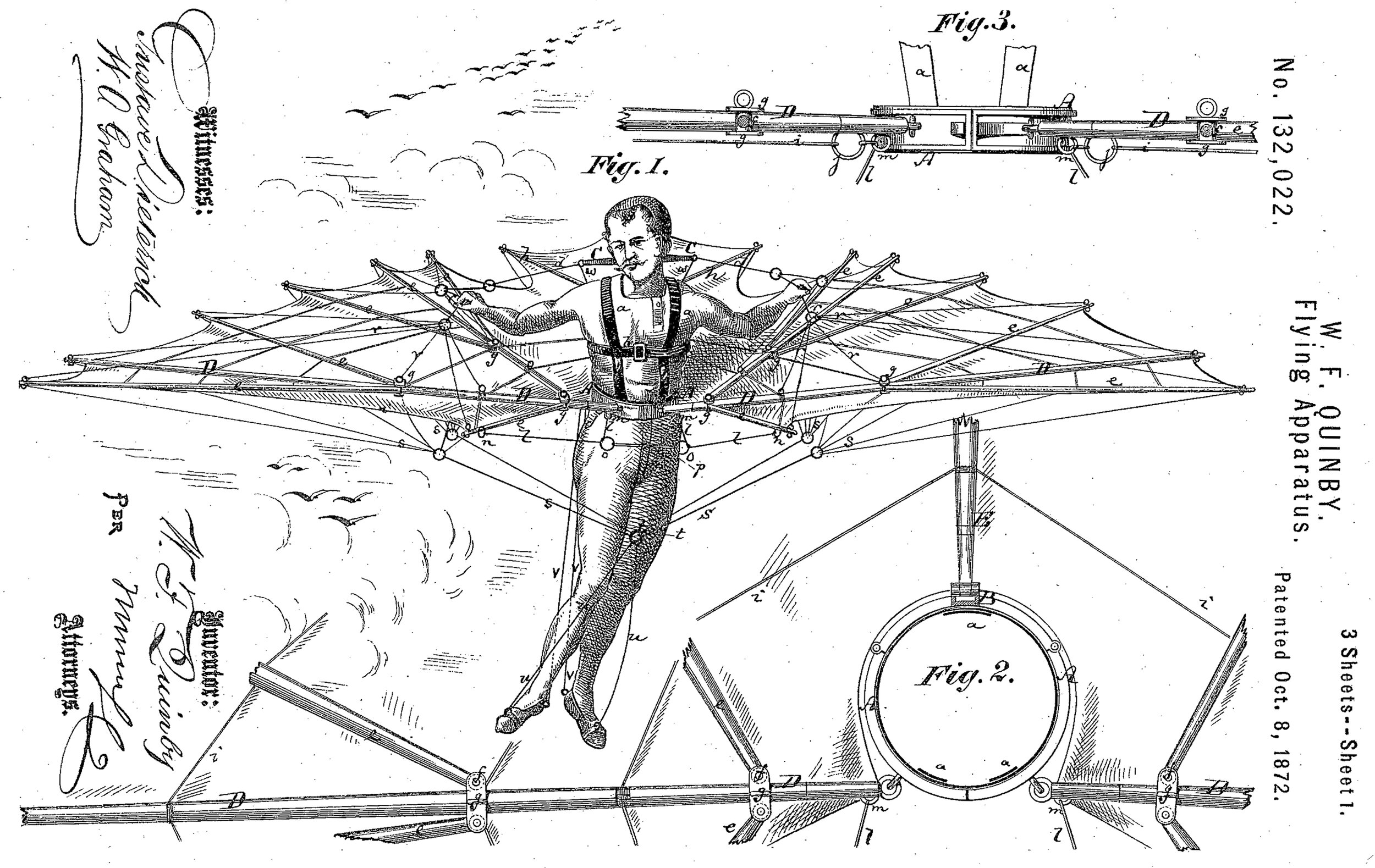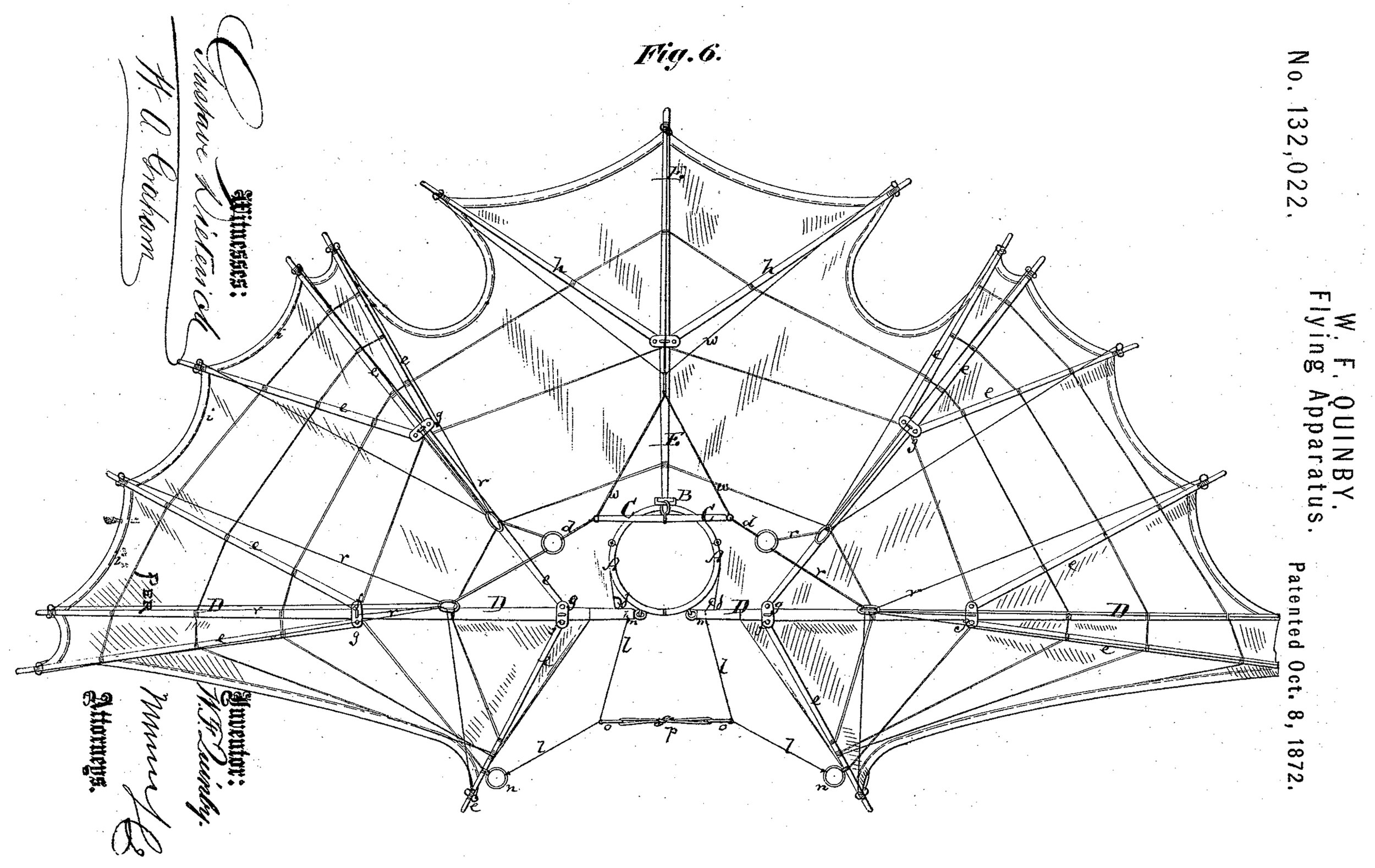W.F. Quinby and his Three Flying Machine Patents
Pictured above is a patent drawing for a flying machine, designed in 1869 by Watson Fell Quinby, or W.F. for short. It’s the second of three patents for flying machines that Quinby has to his name. It shows a man flying with three wing-like sails attached to him, along with some rudimentary controls at his hands and feet. The hand controls appear to flap the side wings up and down, making this design an ornithopter, while the tail wing rotates left or right by adjusting the cords attached to the pilot’s feet. All this is attached to a harness that envelops the pilot’s body, which looks a bit medieval-like. As with all of Quinby’s designs, we don’t have any photos to compare the patent drawings to, so we’ll have to assume that if he built any prototypes, they weren’t successful.
Details on Quinby himself are scarce. We do know he was from Wilmington, Delaware, and in total he has three different patents, all for flying machine designs similar to the one above. He also published a few short books, including a study on the metric system vs the standard system of measurement, and the pros and cons of each. He was no doubt interested in human flight, and his three patents give us some interesting food for thought regarding human-powered flight.
Pictured below are three pages from his third patent, from 1872. Simply called Flying Apparatus, this one appears to be made of one large sail-like wing that radiates out from the pilots midsection. Everything revolves around a waist-ring, and seems to rotate up and down through a system of strings attached to the pilot’s hands and feet. This is a similar design to the one pictured above, but the three separate wings appear to be joined here, creating one large one. Quinby does refer to the wings in the patent documentation, but it’s unclear from the drawings if there are distinct wing areas, or if they all connect into a single sheet, which is what the drawings suggest.
This was clearly Quinby’s most well-developed design, due to the level of documentation and refinement of the design. I’m curious to know if he actually built any of these, or if he was just designing on paper. Either way, he clearly spent quite a bit of time thinking about and developing these designs.
His first design is pictured below. It’s from 1867, and it’s much less detailed than his two subsequent designs shown above. This one is more bird-like, with two large side wings and one tail-wing. His drawing style is also less-detailed, as it’s hard to tell how the wings are structured or what it would look like in flight.
These three designs clearly show that Quinby was fascinated with human flight. Taken as a series, one can tell he developed his ideas over the years as he gained more insights on the matter. Unfortunately we don’t know if he built or tested any of them, so they’ll have to remain a series of intriguing studies. They seem to sit somewhere in between R.J. Spalding’s patent drawings for a Birdman Suit from 1889 and Otto Lilienthal’s ground-breaking studies with gliders from 1891 to 1895. They’re more refined and realistic than Spalding’s, but never got tested in the air like Lilienthal’s.
Read more about other ideas for flying machines here.





